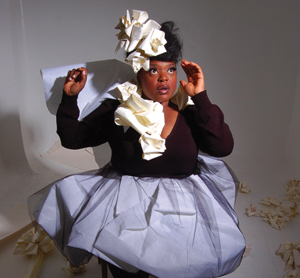Diverse future
Tony Panayiotou looks at what the ACE’s new policy will do to increase diversity in the arts



On Monday 12 September as part of the decibel Performing Arts Showcase, Arts Council England (ACE) will hold a symposium on ‘The Creative Case’ at the Royal Northern College of Music in Manchester. The symposium will publically launch ACE’s new thinking on diversity and equality in the arts, placing art at the forefront of change and opportunity. Speakers will include Alan Davey, Chief Executive of ACE; Sue Caro, Head of Diversity at the BBC; Alistair Spalding, Chief Executive and Artistic Director of Sadler’s Wells; and Deborah Shaw, Associate Director of the Royal Shakespeare Company.
The Creative Case sets out ACE’s new thinking on diversity and the arts. In recent years our work on diversity and equality has been driven by a number of cases: the legal, moral, ethical and business cases. The Creative Case is the strongest of all because it places creativity and diversity together. The largely unrecognised contribution of diverse artists to British arts, cultural life, and even to the creative process itself is vital to a flourishing and vibrant arts ecology.
We are clear that it is not possible to talk about a modern and relevant arts sector without talking about diversity and equality – art needs continuous and new inspirations, and it is meant to be for all. Diversity has the ability to refresh and to stimulate the arts by encouraging new work that challenges and takes risks. The Creative Case goes further, to say that the future of the arts in this country depends on the arts sector as a whole engaging with diverse work and practice otherwise, and especially in a time of recession, the arts will sink into the traditional, the conservative and the conventional.
The conference will be an opportunity for participants to help inform the thinking and direction of the creative case work. How do we use creative diversity, and harness its vibrancy and innovation? The discussions will be tailored for a wide range of arts organisations, from international touring companies and national venues to creative businesses and community projects. Other sessions will look at how, in the past, diverse work has led to cultural innovation and what the contemporary models of best practice in equality look like.
At ACE we are turning our focus from remedying past imbalances towards celebrating diversity, with all the artistic and creative opportunities it offers. The Creative Case will form an integral part of ‘Achieving great art for everyone’, ACE’s ten-year vision for the arts. Our inclusive definition of diversity encompasses any work responding to issues around race, ethnicity, faith, disability, age, gender, sexuality, class or economic disadvantage. When we talk about inequality we mean any social or institutional barriers which prevent people from participating in and enjoying the arts.
In an environment in which we are all challenged for resources and funding, it is vital to the health of the arts that we draw on and recognise the innovation that springs from a diversity of influences and ways of working. This understanding is at the heart of The Creative Case. We relish the challenge and believe that with our partner organisations, our funders and other stakeholders we can create conditions for greater, more diverse and more equal involvement in the creation of and enjoyment of the arts.

Join the Discussion
You must be logged in to post a comment.